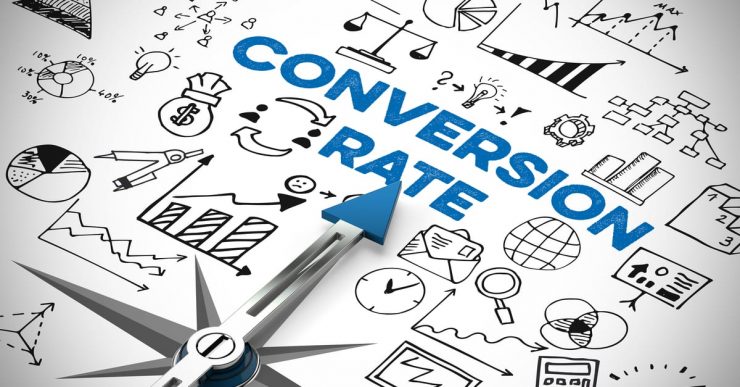Maybe, But User Satisfaction Is the Goal.
It sounds like a simple question. One that requires a simple yes or no answer. Turns out, the answer is a bit more complicated.
You may have heard of the 3-click rule. It’s one of those unwritten and unofficial rules that says it should take no more than three clicks for a user to get the information they’re after. The theory goes that because users are impatient and want instant gratification, they will abandon your website if they can’t access what they want in three clicks or less. While it’s undeniably true that we thirst for immediate answers, turns out there really isn’t any data to back this theory. It’s actually a bit more complex.
What we’re really talking about here is user satisfaction. Will visitors to your site be happy if they find what they’re searching for in three clicks or less? It all depends on the quality of those clicks. If those three clicks take them to information that’s convoluted, or they have to scroll to find the CTA, they are not going to be happy. In fact, they’re probably going to be really annoyed and that certainly doesn’t bode well for user satisfaction!

Focus on User Satisfaction Instead of Clicks
Don’t obsess over the number of clicks. User satisfaction is the driving force behind conversion rates. Users want information that is straightforward and easily accessible is what matters. Satisfied users are much more likely to take meaningful action on your site. So, while you shouldn’t completely ignore the number of clicks that it takes to accomplish a task or drive a conversion, it’s important to understand that it doesn’t necessarily correlate with user satisfaction.
A Click-Through Rate (CTR) is Not the Same Thing As a Conversion Rate
It’s understandable that you might get excited when there’s an uptick in your CTRs. Before you get too excited though, don’t confuse it for a conversion.
CTRs are a metric, shown as a percentage, that measures how many people clicked your ad to visit your website or landing page. Realistically there’s a very slim chance someone will visit your website for the first time and immediately decide to make a contribution or volunteer. That usually only happens over time once they learn about your organization and your mission.
Conversion rates measure how well you get visitors to your site to take a meaningful action. No matter how compelling, comprehensive or emotionally charged your website may be, it’s missing the point unless it’s optimized to deliver a high conversion rate. Driving clicks is great, but if those clicks don’t end up doing something that is beneficial for your organization, they have no value.
Depending on your goals, a “conversion” could be almost anything, but here are a few common types of conversions:
- Making a donation or purchasing branded merchandise
- Submitting a form (contact us form, lead gen form, etc.)
- Signing up to volunteer
- Signing up for a subscription (for your blog or newsletter)
- Registering for an event on the site
- Downloading something (White paper, eBook, etc.)
Don’t Be Discouraged
Don’t give up on website visitors who don’t convert right away. Give visitors several opportunities to convert. Keep them engaged with retargeting ads and give hesitant visitors additional opportunities to convert (also known as “micro-conversions”), like giving them a chance to sign up for your email list through a smart bar, display a limited-time offer in an exit-intent pop-up, or allowing them to subscribe to a web browser and mobile push notifications for the latest updates.
Calculating Your Conversion Rate
Calculating conversion is actually fairly easy. All you have to do is divide the number of conversions you get in a given time frame by the total number of people who visited your site or landing page and multiply it by 100%. Conversion rate = (conversions / total visitors) * 100%
You can be as specific or as broad with your conversion rate as you want to be. Here are a few different types of conversion rates you can use and ways you can use this data to examine performance:
- Overall conversion rate (how well does your website convert traffic from any source?
- Page-level conversion rate (which of your landing pages is better at converting traffic?)
- Campaign conversion rate (did my targeting changes improve anything?)
- Individual ad conversion rate (which ads drive more traffic?)
- Keyword conversion rate (which keywords deserve more budget?)
That’s Great, But How Can I Improve My Conversion Rate?
Okay, knowing what a conversion rate is and how to track it is interesting, but how do you improve your conversion rate?
Conversion rate optimization (CRO) is the process of optimizing your landing page and website to—you guessed it—produce more conversions from your traffic! The great thing about CRO is that it helps you get the most out of the traffic that you already have. For example, even without increasing traffic to your site, improving your conversion rate from 1% to 2% will double your conversions.
Here are some effective ways you can optimize your conversion rate:
Present a Strong Value Proposition
A strong statement that tells your target audience why they should donate to your cause is imperative. The statement needs to be extremely clear, highlighting what impact their donation will have. According to research conducted by Chartbeat, only 55 percent of visitors will spend fewer than 15 seconds on your site, so your value proposition needs work fast. That means you want to put it front and center, and well above the fold.

Build on Goal-Focused Content
Nonprofit websites usually have several web pages that contain target content vital for getting visitors to convert. Make sure those pages form the foundation of your entire site. All of your content needs to somehow support those essential pages. Pages that don’t appear to support the goal can often be reworked until they do. For instance:
- Add a call for support on your “Partners” page, inviting others to partner with you
- Encourage visitors to join your mailing list at the end of each blog post
- Transform your calendar page into a chance for visitors to register for your newsletter
Create Content around Donor Personas
Most nonprofits have several different types of donors from a first-time donor to an ongoing contributor. Make sure every piece of content you create is crafted with these personas in mind. The content needs to speak directly to your different personas, providing information that’s appealing, informative and valuable to those individuals.
Make Donating Easy
The easier it is for visitors to donate, the more likely they will. Place a prominent eye-catching donation button on every page. Streamline the entire donation process, asking only for their name and credit card number at the donation point. You can collect additional information later. According to the Chronicle of Philanthropy, 65 percent of nonprofit websites require three or more clicks to make a donation. Make your donation process fast and simple.
Make Donating Impactful
Letting people know about the positive impact their donations make encourages more of the same. Not surprisingly, Donorbox Nonprofit reports that 63 percent of donors want to know how their donations will be used, and you can fill them in with a compelling visual list or graphic. This can work particularly well for ongoing donations, showing visitors that $15 per month buys a year’s worth of leashes for your shelter animals, while $25 per month covers the annual food bill.
Use High-Converting Forms and Submit Buttons
Different forms have different website conversion rates:
- Contact forms: 3 percent
- Event registration forms: 11 percent
- Surveys: 21 percent
- Contests: 28 percent
Skip the contact forms in favor of gathering information through other forms that boast a higher website conversion rate. Also pay attention to the Submit button on the form, which you can adjust with specific language to better describe the user’s action, such as “Help Now.”

Craft Powerful CTAs
A call-to-action (CTA) tells visitors exactly what you want them to do next, and they can serve as extremely powerful nonprofit marketing tools. After all, 90 percent of visitors who read your headline will also read your CTA.
Keep CTAs short and relevant to adjacent content for best results. For instance, don’t place a CTA asking for donations under an article discussing the benefits of volunteering. Play around with the wording and location of the CTA to see how and where yours are most effective on the page.
Track Results
Dig deeper than metrics, for example total page views, to ensure your content is working as a whole to drive conversions. Some pages will be obvious money makers, while others function to lead visitors to the money-making pages.
Review pages and content to determine if they result in conversions, fine-tuning as needed to better reach your goals. Regular analysis will tell you which pages are doing their jobs, and which may need some adjusting to improve performance.
Optimizing your site can help boost your website conversion rate, but it’s not a one-time deal. Like most nonprofit marketing, optimizing your site is an ongoing project that requires constant attention to deliver consistently phenomenal results.
Your Conversion rate is one of the most important marketing metrics. Unlike click-through rate, conversion rate tells you what percentage of your traffic is actually doing what you want them to do. You can generate all of the clicks you want, but if they aren’t turning into conversions, you need to make some changes.


